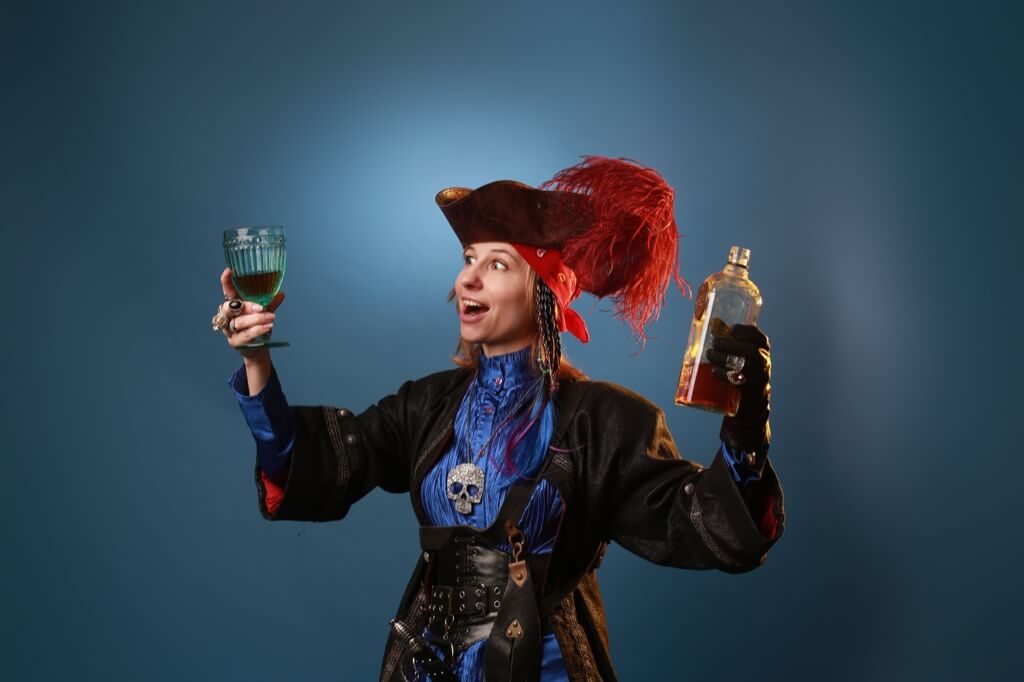- Daylight Saving Time and Its Sweet Ties to Halloween - December 1, 2023
- Puerto Rico’s Ponce Massacre - November 30, 2023
- The Origins of the Doughnut - November 27, 2023
In the world of live performances, the line between reality and acting is often distinct, yet in some rare and tragic instances, that line blurs dramatically. Among such instances, the story of Edith Webster stands out for its profound irony. Webster, a lesser-known actress, found a posthumous place in history due to her uncanny death during a stage performance.
Edith Webster’s story unfolded on the night of November 24, 1986, during a performance of “The Drunkard” at the Towson Moose Lodge in Baltimore. At 60, Webster was playing the role of a grandmother, a part she had portrayed for eight years. In a surreal twist of fate, her character was scripted to sing “Please Don’t Talk About Me When I’m Gone,” followed by a staged death. That night, after performing the song, Webster collapsed for real, leaving the audience in a state of initial applause, then confusion, and finally shock.
The audience’s reaction encapsulated the surreal nature of the moment. Initially, they responded with applause, a routine reaction to Webster’s nightly performance. However, when it became apparent that Webster’s collapse wasn’t an act, the mood shifted dramatically. The applause gave way to a realization of the grave reality unfolding before them.
Medical examinations later confirmed that Webster had suffered a fatal heart attack. This revelation added a somber layer to the already tragic event. The fact that she had previously experienced a heart attack during a performance, as recounted by her daughter, yet chose to continue with her acting career, added a poignant note to her commitment to her art.
While Webster’s death was indeed unique, it was not an isolated event in the history of live performances. Similar incidents, though rare, have punctuated the annals of performing arts. For instance, Johnny Ace’s death during a Russian roulette game in 1954, and Dimebag Darrell’s tragic end in 2004 due to a fan’s violent act, remind us of the unpredictability and sometimes dangerous nature of live performances. In another echo of Webster’s fate, actor George Ostroska suffered a heart attack while playing Macbeth in 1970.
Edith Webster’s final act on stage, though tragic, left a lasting imprint on the history of live theater. Her story is a testament to the unpredictable nature of live performances, where reality can sometimes intrude in the most unexpected and dramatic ways. It also underscores the passion and dedication of those in the performing arts, who often pursue their craft in the face of personal health risks. Webster’s death, while a somber event, serves as a poignant reminder of the thin veil between art and reality in the world of live theater.
The Stage Death of Molière
Jean-Baptiste Poquelin, better known by his stage name Molière, was a renowned French playwright and actor whose death is as dramatic as the plays he penned. On February 17, 1673, Molière was performing in his final play, “The Imaginary Invalid,” when he was seized by a coughing fit and a hemorrhage. Despite suffering from pulmonary tuberculosis, Molière was dedicated to his art and continued performing until the end of the show. Unfortunately, he collapsed again and died a few hours later at his home on the Rue de Richelieu. While it’s often said that he died on stage, he technically passed away shortly after his performance, marking a poetic end to his life in theater.
Johnny Ace’s Tragic End
Johnny Ace, a popular R&B singer in the 1950s, met a tragic and abrupt end during a performance on Christmas Day in 1954. It’s widely reported that Ace died playing Russian roulette. However, an eyewitness account by Curtis Tillman, bass player for Big Mama Thornton, portrays a slightly different scenario. According to Tillman, Ace, who had been drinking, was playing with a pistol, dismissing concerns about its safety. In a fatal moment of recklessness, he pointed the pistol at himself, saying it wasn’t loaded, and tragically, it discharged, ending his life in an instant.
The Shocking Onstage Death of Dimebag Darrell
Dimebag Darrell, the legendary guitarist of the metal band Pantera, met a tragic end that shook the music world. On December 8, 2004, while performing with his new band, Damageplan, at the Alrosa Villa in Columbus, Ohio, Darrell was shot and killed by a deranged fan named Nathan Gale. Gale, who fired 15 shots, killed Darrell and four others while wounding seven more. The motivations behind Gale’s actions remain a topic of speculation, but it’s known that he was schizophrenic and off his medication at the time. Darrell’s death marked a dark day in the history of live music performances, highlighting the unpredictability and potential dangers that artists face.










